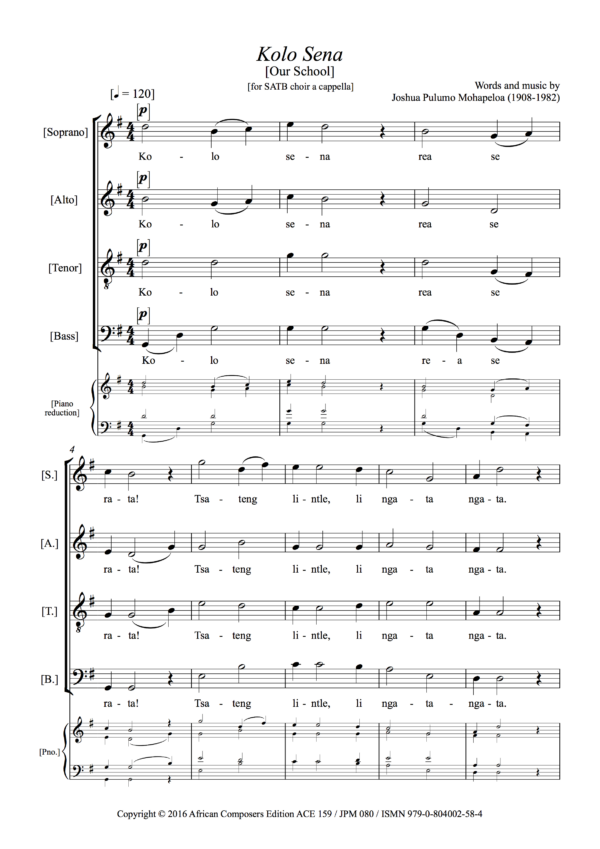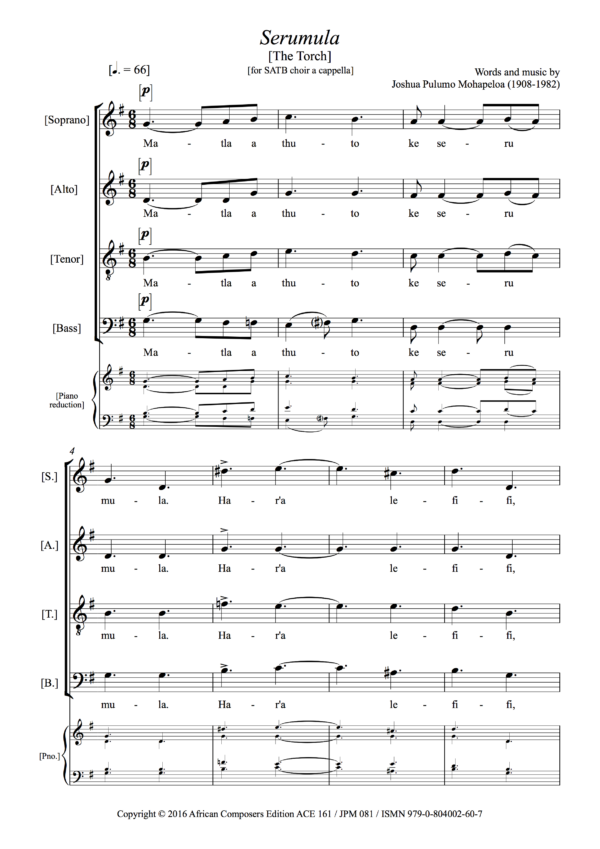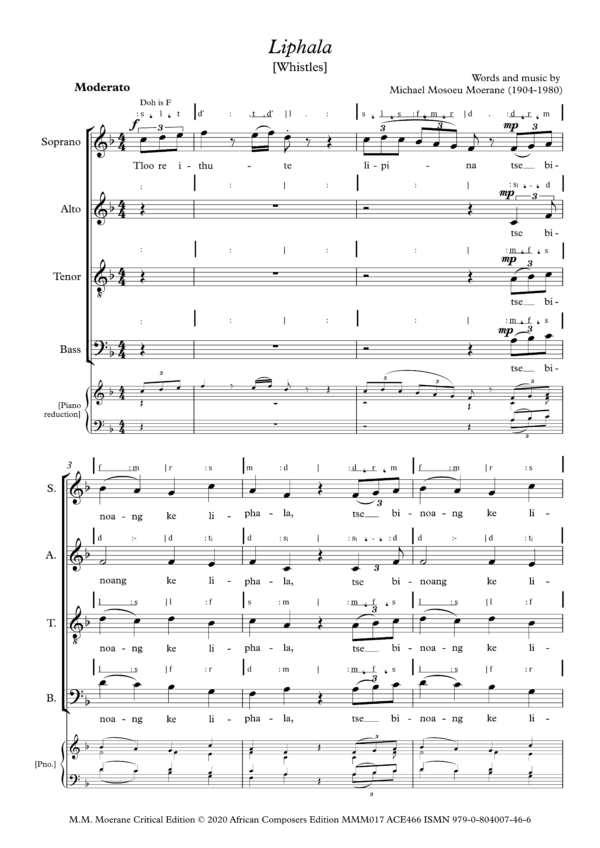Liphala

R39.00
The youth of 1951 Lesotho and South Africa were into jazz, dancing, and the fashionable modernities of the time. This was the youth for whom Drum magazine was founded, in the same year that Mohapeloa published the volume of songs called Khalima-Nosi tsa ’Mino Oa Kajeno: Harnessing Salient Features of Modern African Music, in which ‘Liphala’ first appeared. Vocal jazz was particularly popular at this time, and its syncopated punchy rhythms infuse ‘Liphala’. The word, pronounced ‘dipala’, is a plural noun meaning whistles, pipes, bugles, trumpets, or horns – any loud musical sounds used to summon people – and in reference to this song it is the summons to school. The text reinforces the importance of education for modern Africans, key to upward social mobility and political liberation. The message in the song is hugely positive: schools are places of joy that one should look forward to attending, hence the frequent call, ‘peperi …pepe’ (the horn call) which reverberates throughout the song.
Michael Mosoeu Moerane also wrote a song called Liphala to a different text but with a similar message, which was published in 1938.




